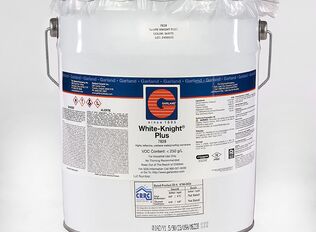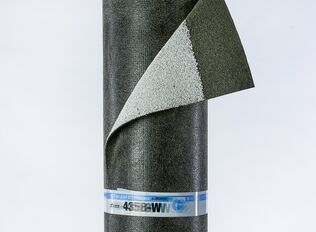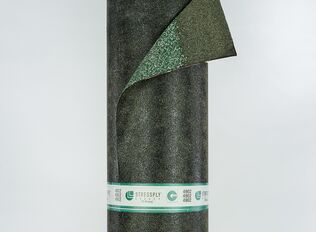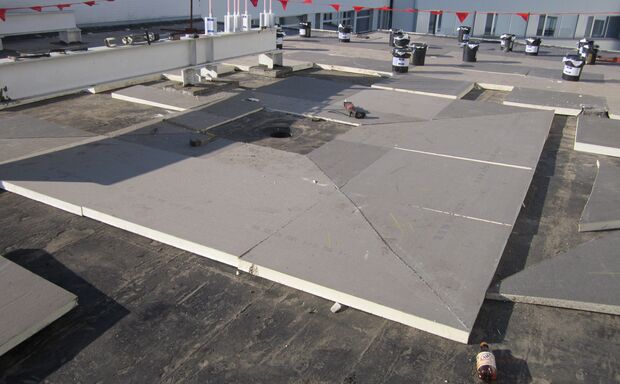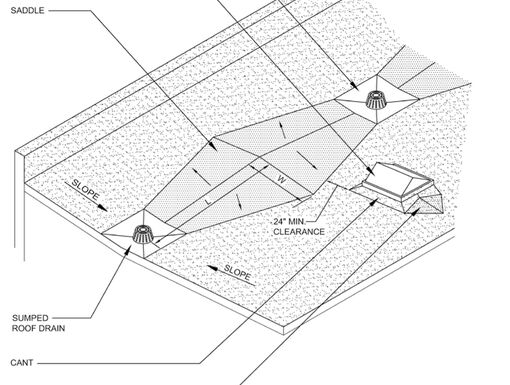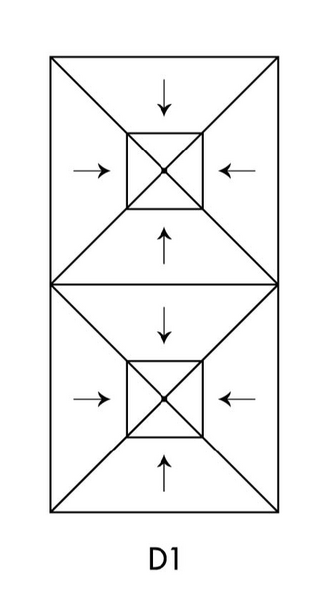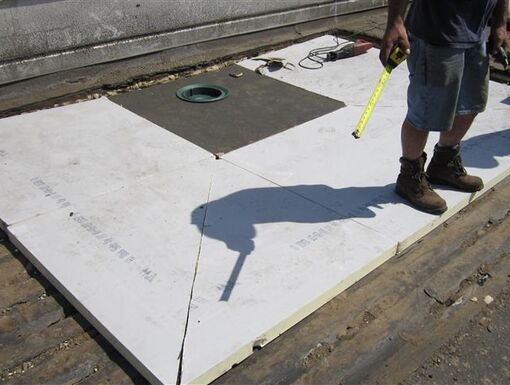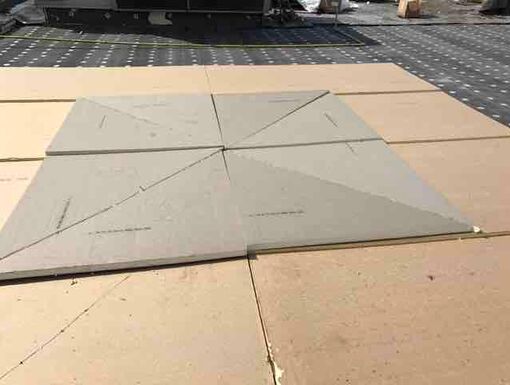Two- And Four- Way Systems
There are numerous ways to design a tapered insulation system, but the most commonly used designs are the two-way and four-way tapered systems. Industry professionals recommend the use of a four-way system (Figure 1) as the most effective way of moving water off the roof.
Assuming you have a square and the drain is in the center of that square, a four-way system is designed to drain down from the perimeter edge on all four sides at a 45-degree angle.
A two-way tapered system (Figure 2) is more rectangular, with the two longest sides sloping to the drain. In theory, the surface is flat to begin with. Therefore, the tapered insulation starts on a dead level surface with a low point that is in a drain line. The slope goes from that point to a high point either at the roof perimeter or at a point between two drain lines. Once the primary slope is created, crickets are installed between drains and between the end of the building and the drain to direct water to the outlets.
Ideally, the tapered system, either two-way or four-way, in combination with the drains, eliminates any ponding water issues. To keep water from ponding at the drains, it is important to ensure the drains are properly sumped so that there is enough momentum for the water to get down the drain.
According to NRCA, drains should be located in square-shaped, gradually tapered sumps formed in the insulation to facilitate localized drainage at drains. A typical interior roof drain assembly occupies about a 4-foot by 4-foot square area with a ½-inch per foot-tapered slope. As a general rule, if the insulation is two inches thick or less, a four-foot by four-foot sump is sufficient. If the insulation reaches three inches or thicker, an 8-foot by 8-foot creates a more gradual slope while still providing the necessary momentum.
Although it is highly recommended to use a four-way tapered system, there are valid reasons to consider installing a two-way tapered system when certain conditions exist. According to the Polyisocyanurate Insulation Manufacturers Association (PIMA), some of those exceptions include:
- Complexity of existing drain locations – Extended sumps or valleys can be used to simplify design while eliminating complex cutbacks.
- Multiple drains at a low point – With the absence of an overflow drain, valleys between drains provide a helpful water path to drain, should one of the drains fail.
- Cost – Tapered insulation is an expensive material element of the roofing system and; therefore, is often the primary target for value engineering. Although value engineering can reduce the cost, it also compromises the drainage effectiveness of the tapered system.
- High point restrictions – When a perimeter condition limits the thickness of a material.
- Rooftop penetration locations – Extended low points, crickets and/or sumps may be needed to move valleys past or around rooftop units or skylight penetrations. In order to provide the most efficient tapered insulation drainage system, one should prioritize design intent and field parameters for each project.
